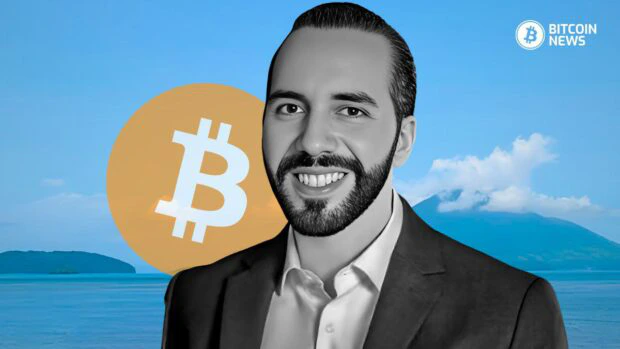El Salvador’s Bitcoin City, announced by President Nayib Bukele in 2021, aims to leverage the Conchagua volcano’s geothermal energy for Bitcoin mining, creating a sustainable and technologically advanced urban area.
The city promises to attract global investment with significant tax incentives and position El Salvador as a leader in blockchain technology.
Despite its innovative approach, the project faces criticisms over environmental concerns, economic stability, and social equity, challenging its vision of transforming into a model digital economy.
What is Bitcoin City?
Bitcoin City is an ambitious initiative by El Salvador, aiming to create a city that revolves almost entirely around Bitcoin. This proposed city is to be located near the Conchagua volcano in southeastern El Salvador, leveraging the volcano’s geothermal energy to power the city and its Bitcoin mining operations.
The use of renewable energy sources is a central theme, aligning with global trends toward sustainability and addressing the typically high energy demands of Bitcoin mining.
Bitcoin City is envisaged as a center for technological innovation, especially focusing on advancements in Bitcoin usage and blockchain technology.
By creating a hub that is both tax-advantageous and technologically forward-looking, El Salvador aims to position itself as a leader in the Bitcoin space, encouraging global tech investment and economic development within its borders.
Geothermal Energy And Bitcoin Mining
El Salvador is capitalizing on its geologically active landscape, which includes over 20 volcanoes, to support its national energy needs, currently deriving about 25% of its energy from geothermal sources.
The Bitcoin City project near the Conchagua volcano plans to expand this usage, specifically to power Bitcoin mining operations.
This strategic use of geothermal energy not only provides a renewable energy source but also significantly reduces the environmental impact associated with traditional Bitcoin mining methods.
Developing this infrastructure requires substantial investment, particularly in geothermal power plants and grid systems essential for large-scale Bitcoin mining. The process involves complex drilling to access steam at high temperatures, demanding considerable upfront capital.
However, once operational, these geothermal facilities offer a cost-effective and reliable energy source, aligning with El Salvador’s vision for a sustainable and technologically advanced Bitcoin City.

El Salvador’s use of geothermal energy presents a stable and cost-effective power source for Bitcoin mining, potentially boosting profitability by lowering energy costs. This reduction in costs can give Bitcoin miners in El Salvador a competitive edge in the global market.
Additionally, by promoting itself as a center for sustainable Bitcoin mining, El Salvador aims to attract foreign investment from those interested in environmentally friendly and cost-efficient operations.
This strategy is expected to spur economic development and job creation within the region, aligning with the broader goals of the Bitcoin City project.
A Tax Haven Powered By A Volcano
El Salvador’s Bitcoin City is designed as a tax haven to attract businesses and individuals by significantly reducing traditional tax burdens.
The city plans to eliminate income, property, and capital gains taxes on Bitcoin transactions, aiming to create an attractive environment for entrepreneurs, investors, and companies.
Instead, a value-added tax (VAT) will be the sole tax imposed, which will fund city infrastructure and municipal services like sanitation and public lighting.
This simplified tax system is expected to reduce administrative costs and attract capital-intensive projects and investors seeking favorable tax conditions. The absence of a capital gains tax on Bitcoin is particularly appealing, likely encouraging more vigorous Bitcoin trading and investment activities.
Bitcoin City’s strategy aims not only to draw wealth but also to foster innovation and economic growth, positioning El Salvador as a leader in integrating digital currency into a sustainable economic model.
However, the city’s ability to promote broad economic benefits beyond just wealth accumulation will be crucial to its long-term success.
The Bitcoin City Vision And Criticisms
The Vision
El Salvador’s Bitcoin City embodies a bold vision to position the country as a leader in the digital future. The city aims to serve as a hub for economic growth, technological innovation, and environmental sustainability, leveraging Bitcoin to drive economic transformation.
A key component of Bitcoin City’s strategy is its commitment to environmental sustainability, using geothermal energy from the Conchagua volcano to power Bitcoin mining.
Overall, Bitcoin City is designed to demonstrate how Bitcoin can be integrated into daily life and urban planning, potentially providing substantial economic benefits and positioning El Salvador as a pioneering model in the digital economy.
The Criticisms
Environmental concerns also loom large over Bitcoin City. While the use of geothermal energy from the Conchagua volcano is touted as sustainable, the overall environmental footprint of Bitcoin mining, which requires significant computational power, remains substantial.
Critics point out that the production and disposal of mining hardware contribute to electronic waste and use resources that might be better allocated to other public needs.
Social and political criticisms focus on the transparency of the project and its actual benefits to the local population. There is skepticism about whether Bitcoin City will serve the broader interests of Salvadorans or merely enrich a narrow segment of tech investors and tourists.
The project was introduced with considerable publicity but little in the way of public consultation, raising concerns about governance and public accountability.
The technological focus on Bitcoin to the exclusion of other economic activities could potentially lead to social stratification, creating a divide between those who are part of the Bitcoin economy and those who are not.
This could exacerbate existing inequalities and limit the city’s appeal and accessibility to a broader population.










